
ix months ago, I began a creative writing experiment almost purely by accident. I started writing a story; but after about 1,000 words, I got stuck. I wasn’t sure what the characters should do next. Rather than give up, I posted my unfinished story online and asked readers to vote on the next plot point. The result? A widely-read, collaborative project that has gone from one little, unfinished story to a novel-in-progress that currently stands at thirty chapters—twenty-nine of which were written with readers’ input.
I thought I was the only writer engaged in such an experiment; but since I started, I have discovered three other authors and one publishing company, who are participating in this growing trend of collaborative, online writing.
I decided to ask them about their experiences so far. What kind of community has developed around their work, and do they enjoy how the community influences their story? Do they feel anxious about having little time for editing? Has this experience been valuable?
You’re Writing What?
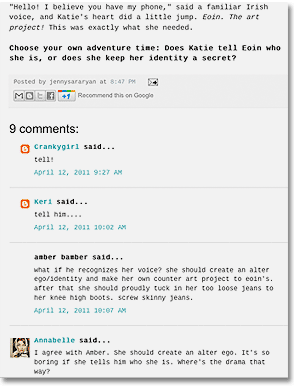
One of the major challenges to publishing this way is figuring out how to describe the process to people. Interactive novel? Collaborative storytelling? Improvised book? I usually just end up finding a computer and logging onto my blog—the ultimate example of “show, don’t tell”!
Luisa Plaja calls her recent novel, Diary of a Mall Girl, “an interactive, online e-book, where readers vote weekly to affect the course of the plot.” She and Sharon Gosling, author of Rémy Brunel and the Ocean of Light, both published their novels with Fiction Express, a British company that exclusively publishes interactive e-books for a teen audience. Only in business since last spring, Fiction Express has published five e-books with each chapter costing between £0.59 and £0.79 (about $1.00 to $1.25 USD).
Like me, Ceri Neil is working on a free online novel hosted on a blog. Like both Sharon and Luisa, Ceri is writing for teenagers. She started writing Destiny Chasers after she realized that “the current generation of young people want to have their say in everything.” So, why not let them dictate her novel?
Creating Communities: The Role of Social Media
Virginia Woolf famously wrote that a woman needs a room of her own in order to write. Well, Luisa, Ceri, Sharon and I all have our own rooms, but we’ve opened up the windows and doors and invited everyone into the writing process. Letting readers dictate our stories’ plots does more than just give readers an opportunity to have their say in the storytelling—we have created communities of readers, writers, and publishers.
Twitter, Facebook, Google+, and the prevalence of blogs have all helped us to spread the word about our projects, which could not have been possible even two or three years ago. In fact, Ceri says it was realizing how much kids were participating in this type of online interaction that made it seem like a viable way to write.
Laura Durman, an editor at Fiction Express, says part of their mandate is to “offer [their] authors and readers an entirely new way of interacting—truly enabling the readers to influence the plot” and that includes embracing social media; they’re also thinking about creating a forum on their site to facilitate interaction between readers and writers. For now, though, they’re encouraging their authors to use Twitter to connect with their readers.
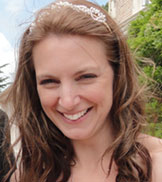
“It’s nice to see people tweeting about what they’re reading.”
~ Sharon Gosling
Neither Sharon nor I had used Twitter before we started our projects. “I was reluctant at first, but it definitely has resulted in my finding a new community around my writing. I have readers that don’t know me, which is a confidence boost… It’s nice to see people tweeting about what they’re reading.” Sharon has also conducted walking tours in the East End of London, where her book is set. “I took pictures of places that I tweeted and then worked into the story itself. That seemed to work really well, and it's the sort of thing that I couldn't have done in a traditional publishing medium.”
Meanwhile, when I realized that most of my readers were not from Toronto, where my book is set, I began imbedding links to websites, maps, and Wikipedia entries for the streets, shops, and subway stops that appear in my book. Again, not the sort of “value added” extras readers would get with a paperback.
If there was one thing that came up again and again in my discussions with these authors, it was the delight they took from the readers’ responses to the work. “I received lovely e-mails and tweets from readers who were enjoying the story and a wonderful handwritten letter from a young reader,” says Luisa. Ceri told me the most exciting experience she had so far was when a 12-year-old reader, who didn’t really understand the idea at first, grasped the concept after a few back-and-forth tweets from Ceri. Once the reader understood her role in the storytelling, she got “completely stuck in.”
I, too, am delighting in the responses I’m getting from strangers. When I started my book, I pretty much knew who was reading it: my mother, my sister, some friends—all adults, all women. But then I started getting hits from men and women from all around the world; and they began to comment, link to my site, follow me on Facebook and Twitter, and e-mail me directly about the story. As a writer whose “official” publications are the odd story or poem in very small journals, this community of people, not only participating in the story but also engaging with me as an author, is a great experience.

“It is not as easy to put off writing the next part, if there are people waiting to read it.”
~ Ceri Neil
Reader as Co-Writer
Hearing from your supportive community is also a great motivator. If you stop, you are not just letting yourself down, you are disappointing your novel’s committed participants, too.
A family friend in New Zealand told me recently that she keeps expecting me to give up—she is “agog” that I can keep up the pace for so long. And when I did take a two-week break this summer, I had disappointed messages from a reader in Brazil reminding me that it wasn’t summer where she was, and she needed the regular posts to “keep out the winter chills.”
Ceri says, “It is not as easy to put off writing the next part, if there are people waiting to read it.”
Not only are our readers motivation to keep going, but sometimes they give us ideas we never would have thought of. For instance, early on in my project, I gave my readers two options: should Katie go home and stalk her ex on Facebook, or should she have supper at her mother’s house? I put out the Facebook suggestion because I really wanted to delve into my protagonist’s past relationships, and I was pretty sure people would go for that one. In the end, people all voted for the mother—a suggestion I gave only because I needed an option two. But suddenly, I was forced to write a whole other side to my story. The mother-daughter relationship ultimately proved to be much more important to the novel as a whole than the ex-boyfriend. I have the readers to thank for that! When Sharon experienced a similar situation, she was ultimately thankful, as writing something she didn’t necessarily want to write definitely stretched her as a writer.
According to William Faulkner, you have to “kill your darlings,” meaning that a writer has to give up the elements they love in a story in order to see the story objectively. When writing a collaborative novel like ours, one can’t be too committed to a plot twist or a future scene because our readers might not let us go there.
Sharon speaks for all of us when she says, “embracing [this way of writing] is the only way to make it work—if you’re battling against your readers, having given them a choice, you’re only going to disappoint them.”
We might not always “kill our darlings,” but we do have to suppress them sometimes when we put our readers’ choices ahead of our own. Ultimately, though, shouldn’t that be the goal with any writing?
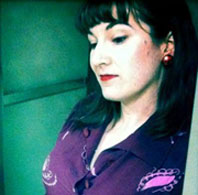
“Since I have no real plot outline, I don’t know when, or if, my ‘novel’ will ever end. And that is a bit intimidating.” ~ Jenny Ryan
“My brain wanted a break.”
All of these projects publish a new chapter every week. This means, on average, a four-day turnaround to write, edit, and post the next chapter. (Ceri sometimes posts short updates during the week, as well, as her character is writing a journal in “real time.”)
After doing this for about twenty-five weeks, I got tired. I was churning out the chapters with little passion, and my options for what the characters could get up to were definitely unchallenging. (I once asked my readership to vote if Katie should eat Thai or Italian for supper. Definitely a low point.) In short, I burnt out. Since I have no real plot outline, I don’t know when, or if, my “novel” will ever end. And that is a bit intimidating.
Writers of Fiction Express stories know they’ll eventually get to stop writing, as their e-books are only eleven chapters long, meaning that though the writers sometimes struggle—at times writing through the night, according to Luisa—their stress is only for a finite amount of time. Still, even those eleven weeks can take their toll.
Like me, Sharon says she struggled to get a chapter written one week because she was fighting exhaustion. “It wasn’t that I didn’t know what to write; I’d just hit a wall, and my brain wanted a break, which of course I couldn’t have. But I got through it, and actually, that was a really valuable lesson. Before, I’d always thought that I could only write in the early morning. But with these deadlines, I have found that I can write whenever and wherever because I have to. There just isn’t an option for me to miss this deadline.” Your readers are waiting, and you cannot disappoint them.
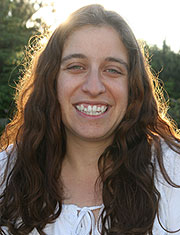
“The editing was done at high speed, and there was far less time to tinker with edits or make major changes.” ~ Luisa Plaja
Editing the Editing Process
How many of you write a tweet, save it to a draft folder, come back three or four times and rework the phrasing, try it in past and present tense, or read it aloud just to hear how it flows before you hit the send button?
Not many people, not even writers, are that finicky with social media. But writers who are cavalier about their tweets certainly would never publish a story or a novel until they’d done most of the above, if not more.
But not us!
The writers who work with Fiction Express are lucky in that they work with an editor before their stories go to “press.” Laura says that this is important, as “the high quality of the stories we provide is very important to us.”
Even so, both Luisa and Sharon felt a bit anxious about the shortened editing process. “The editing was done at high speed, and there was far less time to tinker with edits or make major changes,” Luisa says. Sharon says that though she trusts her “brilliant and supportive editor, I’m sure when I read over the complete manuscript, there will be loads of things that I will wish I had changed.”
I’ve always been a fairly lazy editor—I prefer the writing to the re-writing, so this whole process has kind of been a “get out of jail free” card for me. (No time for edits? Oh, well!) However, I am discovering that one can be too lazy. After all, it is kind of embarrassing to have my mother e-mail me to tell me that Aunt Angela had long hair in chapter twelve, so why is it short in chapter fifteen? Another major mistake was realizing one of my key characters, now called Anne, had spent the first three chapters as “Michelle.” Luckily, my readers work as my editors and let me know when I need a bit of help.
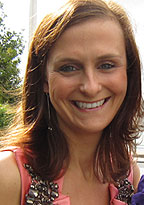
“...the high quality of the stories we provide is very important to us.”
~ Laura Durma
Process Over Product
So much of traditional writing is solitary with the end goal being The Book. Be it physical or virtual, it’s a concrete creation from the hands and mind of the writer with a beginning, a middle, and an end. The process it takes to get there is something writers agonize about, slave over, and love and hate with equal passion; but the goal of that finished product is what most writers are, I’d argue, ultimately striving for.
But we pioneers—Laura, Ceri, Sharon, Luisa and myself—out here on the edge of cyberspace, are forging a new way of looking at writing. Along with our readers, we are developing a genre that allows both writers and readers to focus on the process—what we love is the journey. We might end up with The Book, it’s true, but the way we’re getting there just might be more valuable to us all than the end result.
***
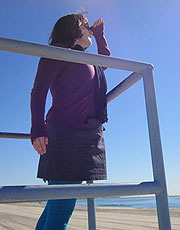
Jenny Ryan is a writer, improv actor, young adult librarian, and snack food connoisseur living in Saskatoon, Saskatchewan, Canada. She lives in a tiny, yellow house with a vegetable garden, a sun porch, and a very leaky basement. She has been watching The Young and the Restless for twenty-six years; this explains a lot.
Find out more about Jenny’s projects by visiting her collaborative novel blog, You Were Going To Be Fantastic, follow her on Twitter @jennysryan, and like her on Facebook.
-----
Enjoyed this article? Check out these related articles on WOW!:
Stella & Audra Price: IM Novel Collaboration
Blogs, Twitter, Websites and More: Connecting with Young Readers through Social Media
Blog Analytics 101: How to Use Google Analytics to Track Your Readers
Novel Writing: Choosing a Method that Works for You
The Fiction Writer's Toolkit